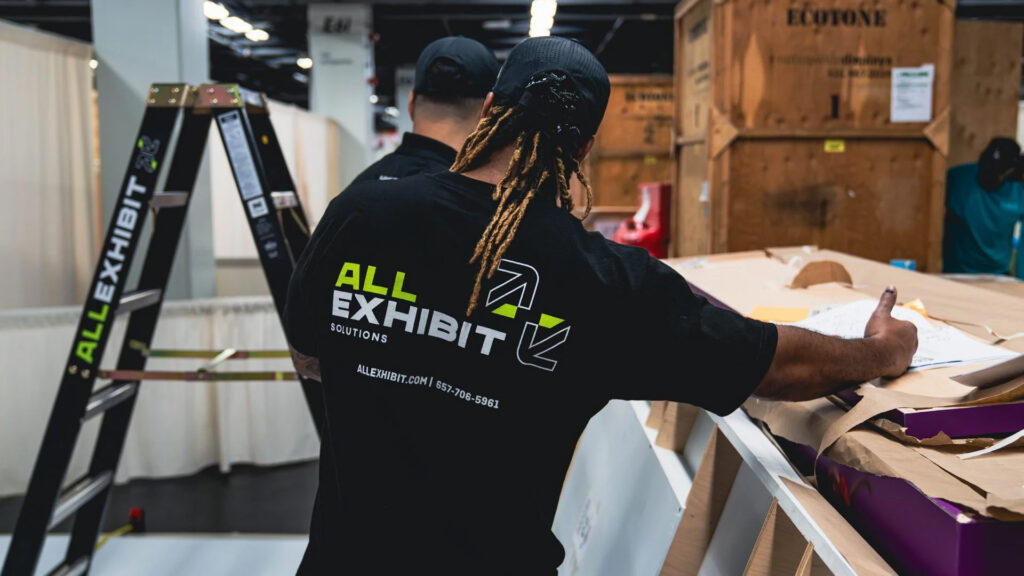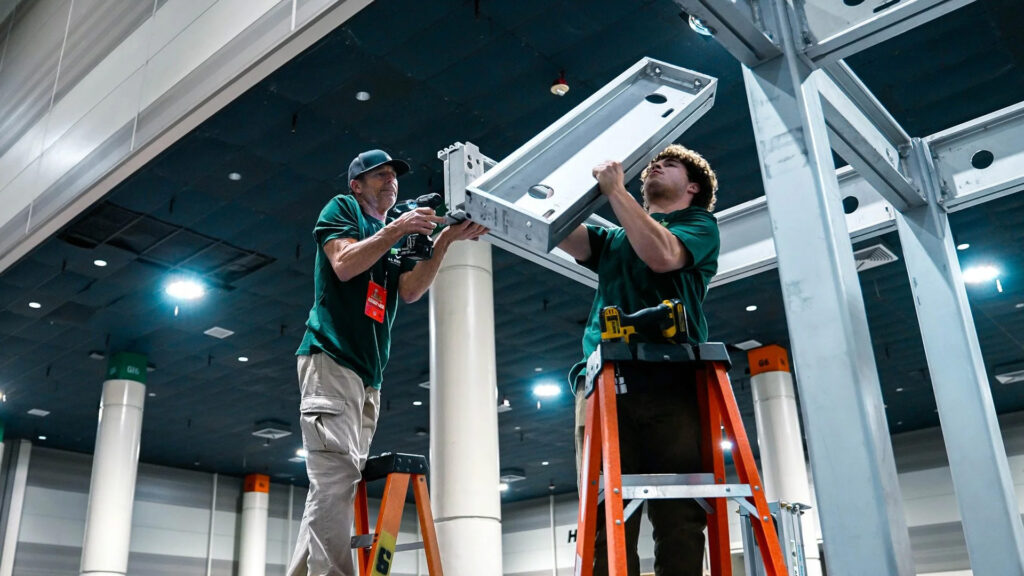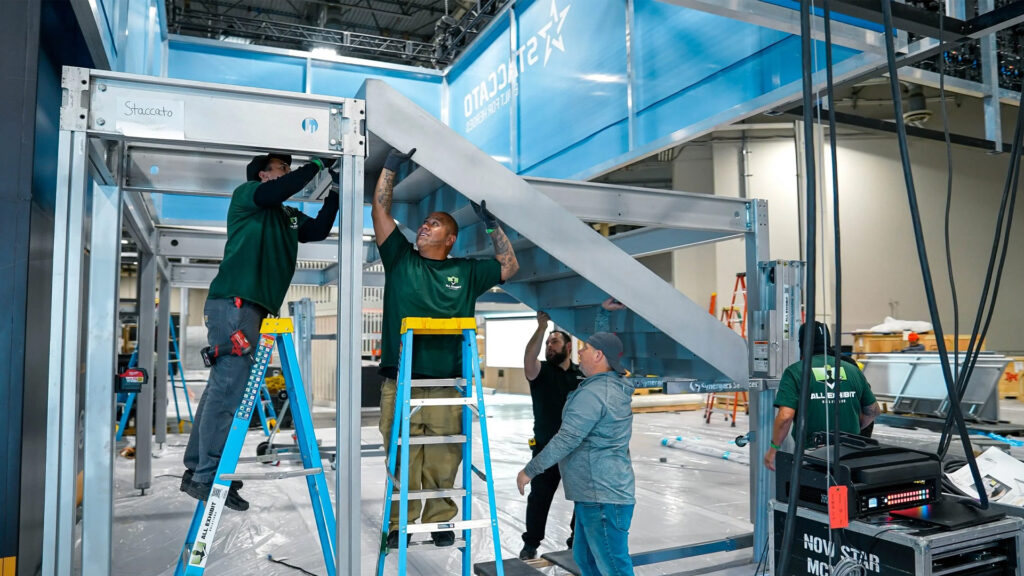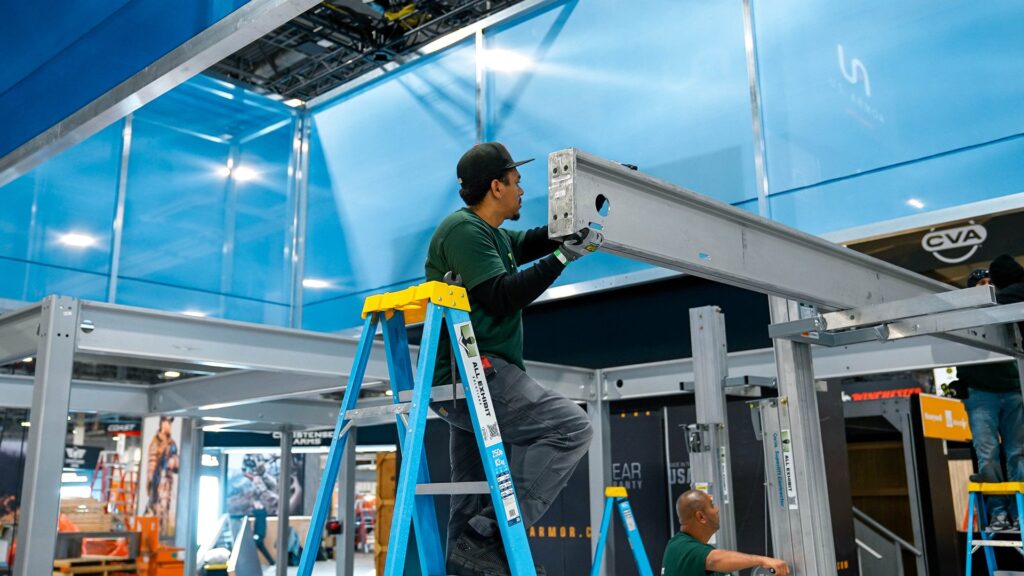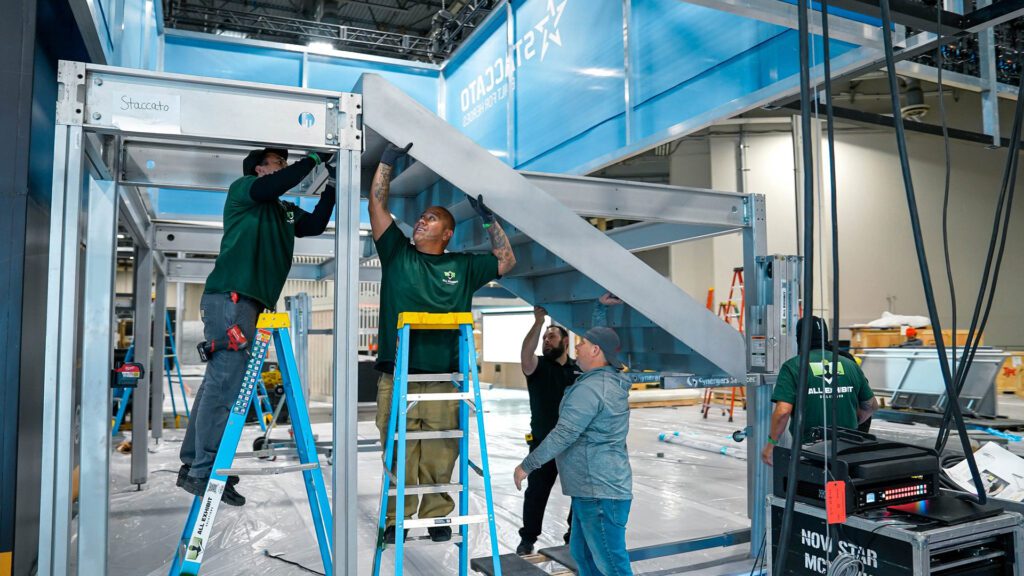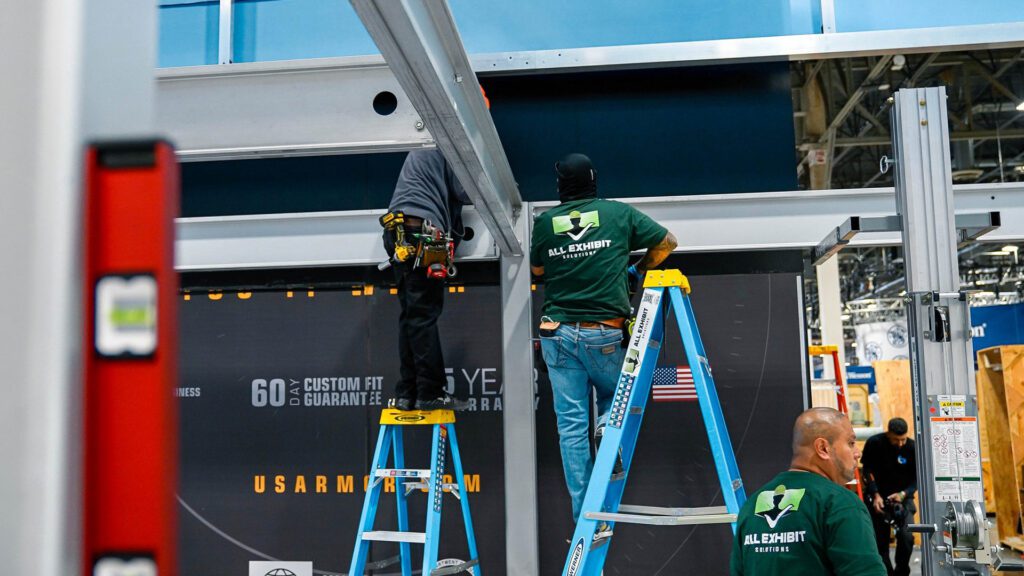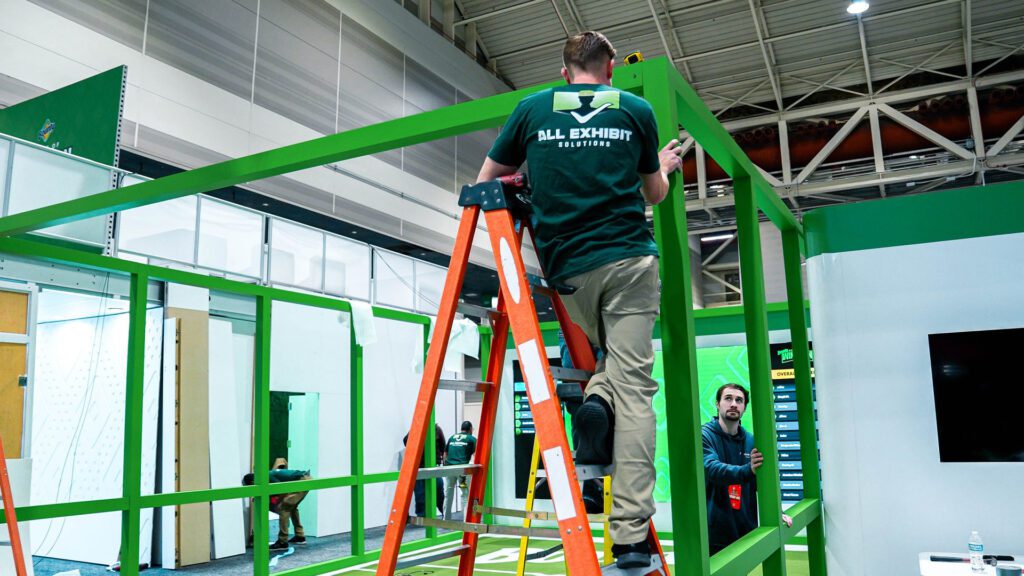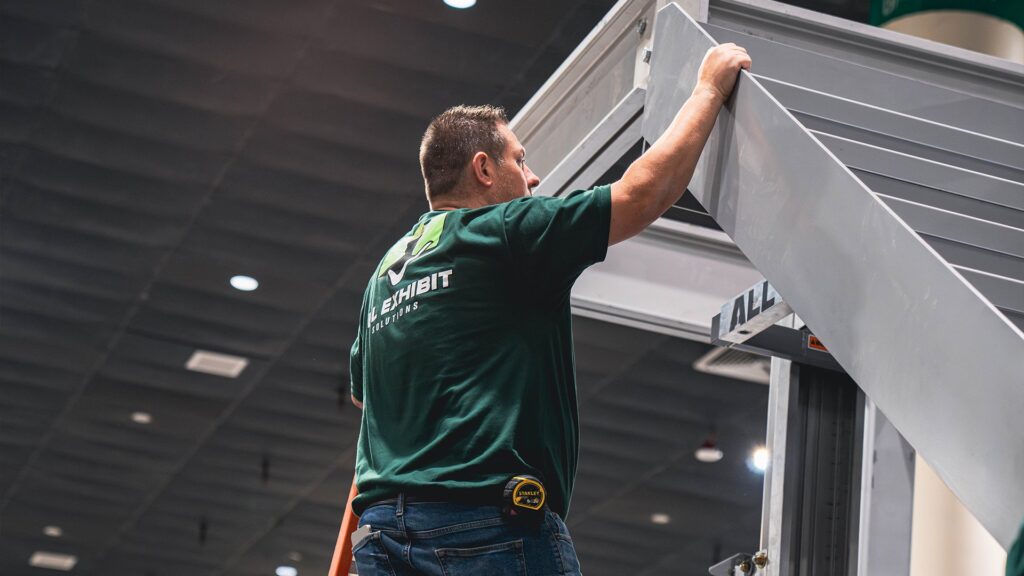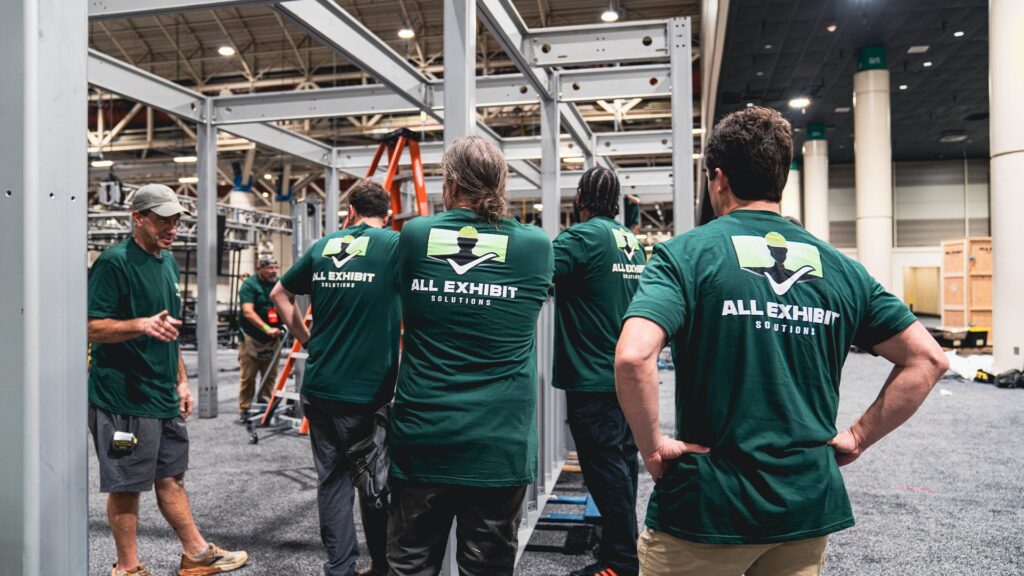- Introduction
- Preparing for Trade Show Sales Success: The Importance of Booth Setup
- Understanding Your Audience: Tailoring Your Approach
- Training Your Booth Staff for Sales Success
- Crafting a Strong Trade Show Sales Pitch
- Using Product Demonstrations to Drive Sales
- Utilizing Giveaways and Promotions to Increase Engagement
- Following Up After the Trade Show: Converting Leads into Sales
Introduction
Trade shows offer an excellent opportunity to showcase your products, connect with potential clients, and ultimately increase sales. With numerous exhibitors vying for attention, selling successfully at a trade show requires thoughtful strategy, preparation, and strong engagement. In this guide, we’ll explore how to maximize your sales potential by focusing on booth setup, staff training, and effective sales techniques. With proper planning and execution, you can transform your trade show participation into a valuable and profitable experience.
Preparing for Trade Show Sales Success: The Importance of Booth Setup
The foundation of successful selling at a trade show starts with creating a booth that attracts attention and engages attendees. Your booth is often the first impression visitors will have of your brand, so it’s essential to make it stand out. A well-organized, visually appealing booth sets the stage for meaningful conversations and ultimately leads to more sales.
Creating an engaging booth layout is crucial. Your booth should be open, inviting, and easy to navigate. Avoid overcrowding the space with too many displays or unnecessary items. Designate specific areas for product demonstrations, brochures, or one-on-one meetings. Key product displays should be positioned in high-traffic areas where they can capture the most attention, such as near the front of the booth or in well-lit areas.
Signage and visuals also play a critical role in attracting attendees. Your booth’s signage should be clear, concise, and align with your brand messaging. Use bold fonts and high-contrast colors to ensure your signs are easy to read from a distance. Incorporating large banners, digital displays, or other visual elements helps communicate your key selling points quickly and effectively. Since many attendees will only glance at your booth as they walk by, make sure your messaging is easily visible and impactful.
Additionally, professional booth setup is key to ensuring your trade show presence looks polished and inviting. Partnering with professional installation and dismantle services, such as those provided by All Exhibit Solutions, allows you to focus on selling while the logistics of booth assembly are handled efficiently and accurately.
Understanding Your Audience: Tailoring Your Approach
A deep understanding of your target audience is essential for developing an effective sales strategy. Trade shows bring together diverse groups of people, and knowing your audience allows you to tailor your approach and increase the likelihood of making sales.
Before the event, conduct research on who will be attending the trade show. Many trade shows publish an attendee list or provide demographic information. Use this data to identify key buyer personas—such as industry professionals, corporate decision-makers, or individual consumers—who are most likely to benefit from your products or services. Tailoring your messaging to these groups will improve your lead generation and sales conversion efforts.
Buyer personas can help guide how you communicate with attendees. Understanding their goals, challenges, and motivations will enable your sales team to engage in more meaningful conversations. Personalizing your approach for each type of visitor will create a stronger connection and make your products or services more appealing to potential buyers.
Training Your Booth Staff for Sales Success
Your booth staff are the face of your brand at the trade show, and their ability to engage attendees and convert leads into sales is crucial. A well-prepared team can significantly impact the success of your trade show participation.
Product knowledge is one of the most important aspects of staff training. Ensure your team members are fully informed about your products or services, including their features, pricing, and competitive advantages. Booth staff should be able to confidently answer questions from attendees and provide relevant information that addresses their specific needs. A well-informed staff member can turn casual interest into a serious sales opportunity.
In addition to product knowledge, it’s essential to train your staff on how to engage attendees effectively. Encouraging team members to initiate conversations with open-ended questions or invite visitors to interact with product demonstrations can break the ice and spark interest. Friendly, confident engagement is often the key to attracting attention and keeping attendees at your booth longer.
Another critical element is lead qualification. Not every attendee is a potential customer, so it’s important for your team to identify high-potential prospects quickly. Train your staff to ask the right questions to determine if an attendee is likely to convert into a sale. This will help ensure that your time is focused on prospects who are genuinely interested in your product or service.
Crafting a Strong Trade Show Sales Pitch
A well-crafted sales pitch is essential for trade show success. Since trade show interactions tend to be brief, your pitch needs to be clear, concise, and engaging.
Start by highlighting the value your product or service provides. Focus on how it solves a problem or addresses a specific need for the attendee. Be sure to keep the messaging simple and easy to understand—attendees are often overwhelmed with information at trade shows, so cutting to the chase will help your message stand out.
It’s also important to customize your pitch to the person in front of you. Different attendees will have different priorities. For example, a corporate buyer might be more interested in the long-term ROI of your product, while a small business owner might focus on ease of use and cost. Training your team to adapt the pitch to the audience will improve the chances of making a connection.
Finally, equip your team with the ability to handle objections effectively. Attendees will often raise concerns about price, functionality, or integration with existing solutions. Having prepared responses to common objections can help overcome hesitations and move the conversation forward.
Using Product Demonstrations to Drive Sales
Product demonstrations are one of the most effective ways to engage attendees and showcase the benefits of your offerings. A well-executed demo not only captures attention but also helps attendees understand how your product works in real-life scenarios.
To make the most of product demonstrations, set up a dedicated demo area within your booth. Ensure this area is visible and provides enough space for attendees to watch or even participate in the demo. Scheduling regular demonstrations throughout the day creates a sense of anticipation and gives attendees a reason to return to your booth.
During the demo, focus on the key features and benefits of your product. Keep it short and to the point, but ensure that the demo highlights how your product solves common problems or improves efficiency. Hands-on demos where attendees can try the product themselves are often the most memorable and impactful.
Utilizing Giveaways and Promotions to Increase Engagement
Giveaways and promotions can be powerful tools for attracting visitors to your booth and encouraging sales. When executed well, they can help create a memorable experience and keep your brand top of mind long after the trade show has ended.
Select giveaways that are both useful and relevant to your target audience. Items such as branded tech gadgets, eco-friendly products, or product samples often make the best impression. Ensure that your logo and contact information are prominently displayed on the giveaway item so attendees can easily remember your brand.
Trade show-exclusive promotions are another effective way to incentivize purchases. Consider offering limited-time discounts, free trials, or bundled packages to attendees who visit your booth. Make sure these promotions are clearly communicated to draw interest and encourage immediate action.
Following Up After the Trade Show: Converting Leads into Sales
The work doesn’t stop when the trade show ends. In fact, the post-show follow-up process is just as important as the event itself. Without timely and thoughtful follow-up, valuable leads can be lost, resulting in missed sales opportunities.
Begin by prioritizing lead follow-up. Personalize your communication by referencing conversations you had at the trade show and reiterating how your product can solve their specific challenges. Follow up via email, phone calls, or social media to maintain the connection and keep the conversation going.
For leads that aren’t ready to buy immediately, nurturing them with additional information can help keep your brand top of mind. Send follow-up materials such as case studies, product brochures, or demo videos to further engage prospects and move them closer to making a purchase decision.
Finally, measuring the return on investment (ROI) of your trade show participation is essential. Tracking the number of leads generated, sales made, and opportunities created will help you assess your trade show performance and refine your strategy for future events.
Selling successfully at a trade show requires thoughtful preparation, a well-trained team, and a clear strategy for engaging attendees. By focusing on booth setup, understanding your audience, crafting a compelling pitch, and following up with leads, you can turn trade show participation into a major sales opportunity. For a stress-free experience, rely on All Exhibit Solutions to handle your booth setup and dismantle so you can focus on closing deals and building relationships with potential clients.


